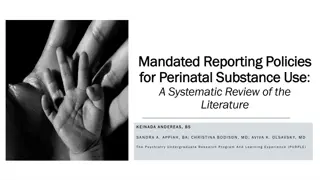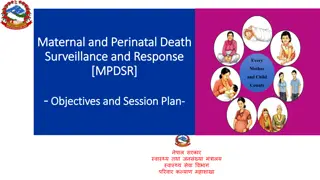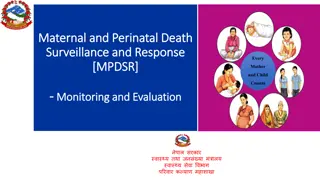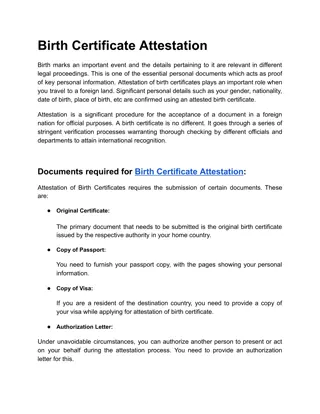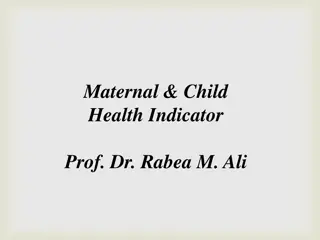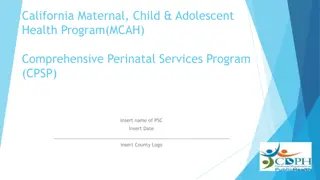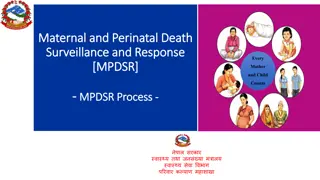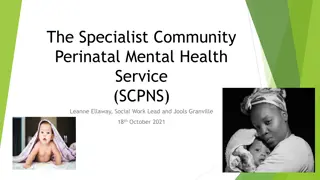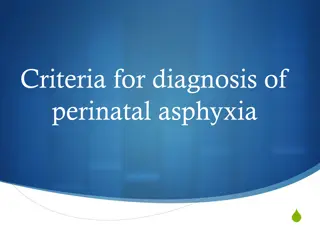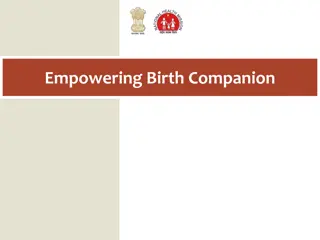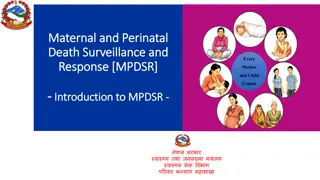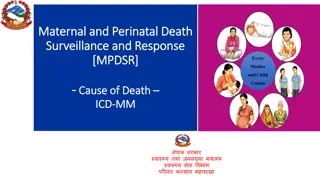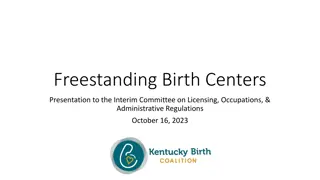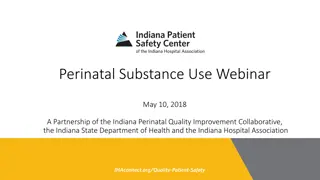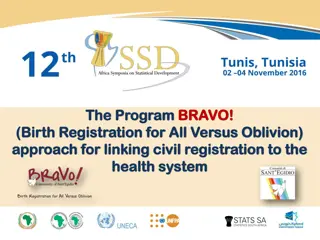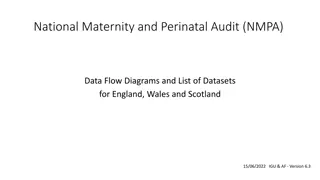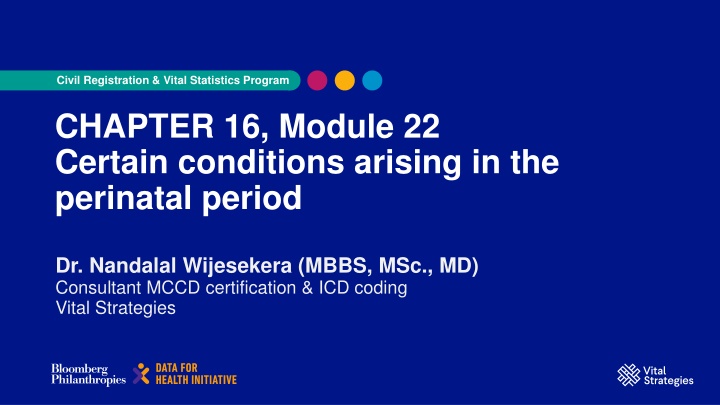
Perinatal Conditions & Birth Outcomes
Delve into Chapter 16 of the Civil Registration & Vital Statistics Program, focusing on perinatal conditions, live births, foetal deaths, birth weights, and more. Explore important concepts such as live birth criteria, foetal death definitions, birth weight classifications, and their significance in medical coding and documentation.
Download Presentation

Please find below an Image/Link to download the presentation.
The content on the website is provided AS IS for your information and personal use only. It may not be sold, licensed, or shared on other websites without obtaining consent from the author. If you encounter any issues during the download, it is possible that the publisher has removed the file from their server.
You are allowed to download the files provided on this website for personal or commercial use, subject to the condition that they are used lawfully. All files are the property of their respective owners.
The content on the website is provided AS IS for your information and personal use only. It may not be sold, licensed, or shared on other websites without obtaining consent from the author.
E N D
Presentation Transcript
Civil Registration & Vital Statistics Program CHAPTER 16, Module 22 Certain conditions arising in the perinatal period Dr. Nandalal Wijesekera (MBBS, MSc., MD) Consultant MCCD certification & ICD coding Vital Strategies
Chapter 16 Diseases of the Genitourinary System Chapter 16 of Tabular List Page 206 of your Workbook
Important points for module 22 Categories range from P00 to P96 Of the 100 available categories 59 have been allocated. There is one inclusion at the beginning of this chapter, and 5 exclusions. Disorders related to length of gestation and foetal growth - birth weight takes priority over gestational age.
Live birth Live birth is the complete expulsion or extraction from its mother of a product of conception, irrespective of the duration of pregnancy, which after such separation, breaths or shows any other evidence of life, such as beating of the heart, pulsation of the umbilical cord, or definite movement of voluntary muscles, whether or not the umbilical cord has been cut or the placenta is attached; each product of such a birth is considered live born.
Foetal death Fetal death is death prior to the complete expulsion or extraction from its mother of a product of conception, irrespective of the duration of pregnancy, death is indicated by the fact that after such separation the foetus does not breath or shows any other evidence of life, such as beating of the heart, pulsation of the umbilical cord, or definite movement of voluntary muscles.
Birth weight The first weight of the fetus or new born obtained after birth
Low birth weight Birth weight less than 2500g (up to, and including 2499g)
Very low birth weight Birth weight less than 1500g (up to, and including 1499g)
Extremely low birth weight Birth weight less than 1000g (up to, and including 999g)
Gestational age Measured from the first day of last normal menstrual period Expressed in completed days or completed weeks
Pre-term Less than 37 completed weeks (less than 259 days) of gestation
TERM From 37 completed weeks to less than 42 completed weeks (259 - 293 days) of gestation
Post-term 42 completed weeks or more ( 294 days or more) of gestation
Perinatal period The perinatal period commences at 22 completed weeks (154 days) of gestation (the time when birth weight is normally 500g), & ends 7 completed days after birth
Neonatal period The neonatal period commences at birth & ends 28 completed days after birth
Neonatal death Deaths among live births during the first 28 completed days of life
Early neonatal death Deaths occurring during the first 7 days of life
Late neonatal death Deaths occurring after the 7 day but before 28 completed days of life
Important points for module 22 P07 gives guidance on the assignment of this code if both birth weight & gestational age are specified P10-P15 birth trauma is classified to six categories which are arranged according to the physical effect of the injury P35-P39 includes only congenital infections & parasitic disease & those infections acquired in utero or which are present at birth
A useful hint Exercise 14 has 5 codes!!
Answers for module 22 1. P07.0 2. P95 3. P83.5 4. P92.9 5. P11.5 6. P05.2 7. P96.0 8. P37.0 9. P96.4 10.P61.0
Answers for module 22 11. E70.0 12. P08.2 or P08.1 for new edition 13. P04.1 14. P07.1, P25.1, P22.0, P59.9, P21.0 15. Q65.3 16. P22.0 17. P55.1 18. P36.9 19. P11.3 20. P55.9




